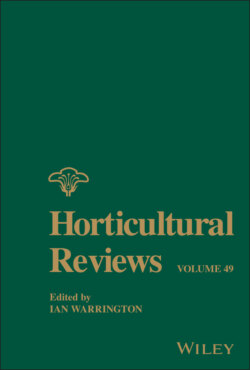Читать книгу Horticultural Reviews, Volume 49 - Группа авторов - Страница 14
I. INTRODUCTION
ОглавлениеHydrangeas have been important plants throughout history, with records of their use going back as far as ancient China (Mallet et al. 1992). Hydrangeas have had cultural impacts through use for medicine and ornamental horticulture. Various species have traditionally been used medicinally throughout East Asia (Long and Li 2004; Abe and Ohtani 2013; Singh 2016) and in southeast North America (Banks 1953; Cozzo 2004) for a variety of purposes, including treating abdominal pain, colds, fevers, and arthritis.
In addition to being popular florist crops, plants in the genus Hydrangea are flowering shrubs that have been increasing in popularity in recent years as versatile and attractive landscape plants. This increase can in part be attributed to the introduction of remontant H. macrophylla Thunb. cultivars, notably, ‘Bailmer’ (Endless Summer® The Original) in 2004. Since then, other Hydrangea species have also experienced an increase in popularity. Although H. macrophylla has been well studied, other Hydrangea species have not received as much attention. H. quercifolia Bartr. (oakleaf hydrangea), in particular, has been little studied even though it is such a unique species.
Although it has not been utilized to the same extent as H. macrophylla, oakleaf hydrangea offers great potential to make a major contribution to any landscape. The attention currently being received by the genus due to the discovery and improvement of reblooming H. macrophylla can be capitalized on as gardeners begin to look for diversity in the genus. H. quercifolia is distinguished among hydrangeas by its lobed leaves, attractive exfoliating bark, and potential for intense fall colors (Figure 1.1). This combination of traits allows oakleaf hydrangea to add four‐season interest to the landscape, unlike any other Hydrangea species.
Figure 1.1 Unique aspects of oakleaf hydrangea. Lobed leaves, showy panicles, intense fall foliage color, and exfoliating bark.
(Source: Photo credits: A. Sherwood.)
